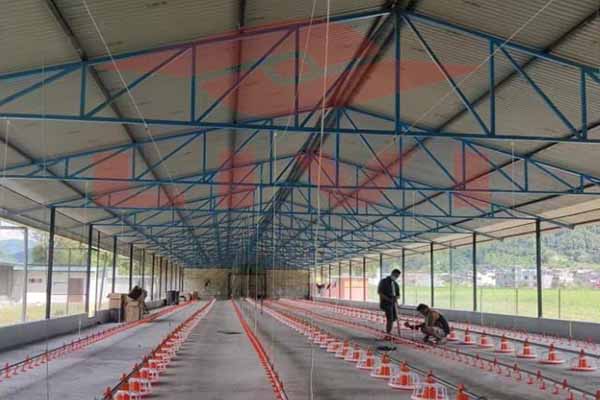Poultry Ventilation System for 100,000 Chickens in Zambia: The Ultimate Guide
Understanding the Challenges of Large-Scale Poultry Farming in Zambia
In Zambia, the poultry industry is rapidly growing, with many farmers looking to expand their operations. One of the key components of a successful poultry farm is an efficient ventilation system. For a farm housing 100,000 chickens, this becomes even more critical. Let’s delve into the intricacies of designing a poultry ventilation system for such a large-scale operation.
Key Considerations for a 100,000 Chicken Ventilation System
– Airflow Requirements: Ensuring adequate airflow is crucial for maintaining optimal conditions for the chickens. A general guideline is to provide 1 cubic meter of air per chicken per minute.
– Temperature Control: The ideal temperature for chicken rearing is between 18°C and 23°C. A ventilation system must be able to maintain this temperature range consistently.
– Humidity Control: High humidity can lead to health issues in chickens. A good ventilation system should be able to control humidity levels effectively.
– Air Quality: A ventilation system should filter out dust, ammonia, and other pollutants to ensure a healthy environment for the chickens.
Components of a Poultry Ventilation System
– Fans: High-capacity fans are essential for creating the necessary airflow. For a 100,000 chicken farm, you would need a significant number of fans, each capable of moving large volumes of air.
– Ventilation Hatches: Strategically placed ventilation hatches allow for controlled air exchange.
– Air Filters: High-efficiency particulate air (HEPA) filters can help maintain air quality by removing harmful particles.
– Control Systems: Automated control systems can adjust fan speeds and hatches based on temperature, humidity, and other environmental factors.
Case Study: A Successful 100,000 Chicken Ventilation System in Zambia
A recent project in Zambia involved the installation of a state-of-the-art ventilation system for a 100,000 chicken farm. The system included:
– 120 High-Volume Low-Speed (HVLS) Fans
– 40 Ventilation Hatches
– Advanced Control System
– HEPA Air Filters
The results were impressive:
– Reduced Ammonia Levels: The air quality improved significantly, leading to better health for the chickens.
– Consistent Temperature and Humidity: The system maintained optimal conditions throughout the year.
– Energy Efficiency: The HVLS fans were more energy-efficient than traditional fans, reducing operational costs.
Conclusion
A well-designed poultry ventilation system is essential for the success of a large-scale poultry farm in Zambia. By considering the specific needs of your operation and investing in high-quality equipment, you can create a healthy and productive environment for your chickens.
For more information on designing a ventilation system for your 100,000 chicken farm in Zambia, contact us today. We offer free design consultations and equipment quotes.





